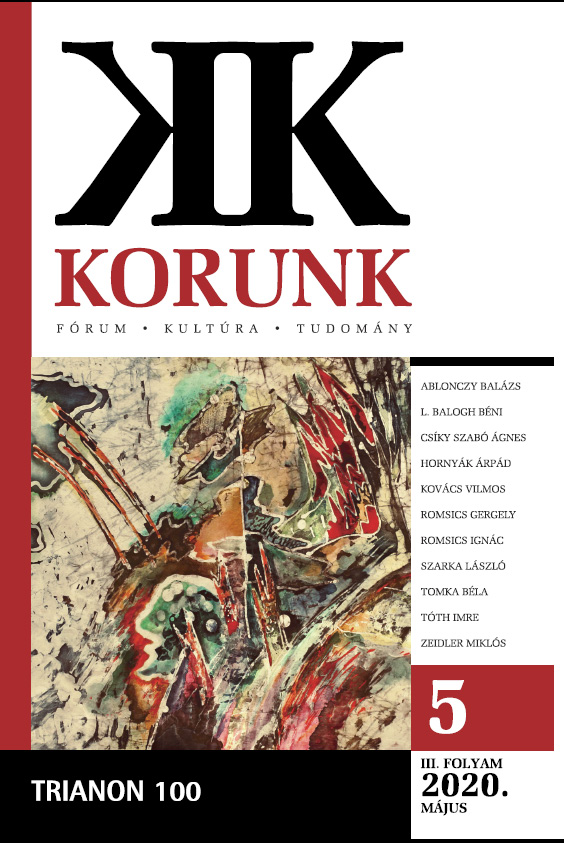Trianon okai
Reasons for the Treaty of Trianon
Author(s): Ignác RomsicsSubject(s): Recent History (1900 till today)
Published by: Korunk Baráti Társaság
Keywords: Peace Treaty of Trianon; Hungary; territorial and population loss; external causes; internal causes
Summary/Abstract: The Treaty of Trianon, signed in 1920, reduced the area of Hungary from 329,000 square kilometers or, discounting Croatia, from 282,000 square kilometers to 93,000 square kilometers; while the country’s population dropped from 20.8 million (or 18.2 million) to 7.9 million. Out of a total of 10.6 million people in the detached lands, 3.3 million or 30,2% were ethnic Hungarians (Magyars). In his essay Ignác Romsics identifies four factors which led to this dramatic outcome. Fundamental among these were the multiethnic character of historic Hungary and the growing separatism of the non-Magyar communities representing about half of the population. The author then proceeds to weigh the irredentism of Italy, Serbia and Romania as a second cluster of contributing causes. Third, the ambitions of these revisionist states were supported at the end of the Great War by the victorious great powers that expected the new or enlarged nation-states to act as a barrier to German expansion eastward or to any eventual revival of Russian expansionism westward. A fourth and final factor is identified in the pacifist orientation of the nascent democratic regime led by Mihály Károlyi. Instead of the armed defense of the homeland it acquiesced to the occupation of large Hungarian territories by Serbian, Romanian and Czech troops without any effective resistance.
Journal: Korunk
- Issue Year: 2020
- Issue No: 05
- Page Range: 3-13
- Page Count: 11
- Language: Hungarian

